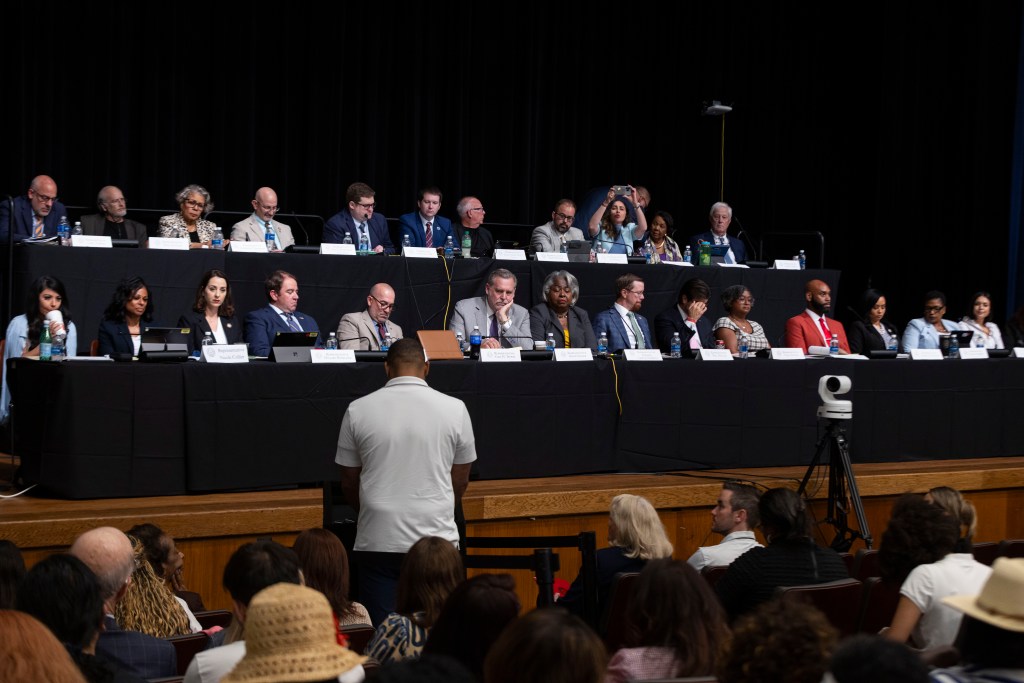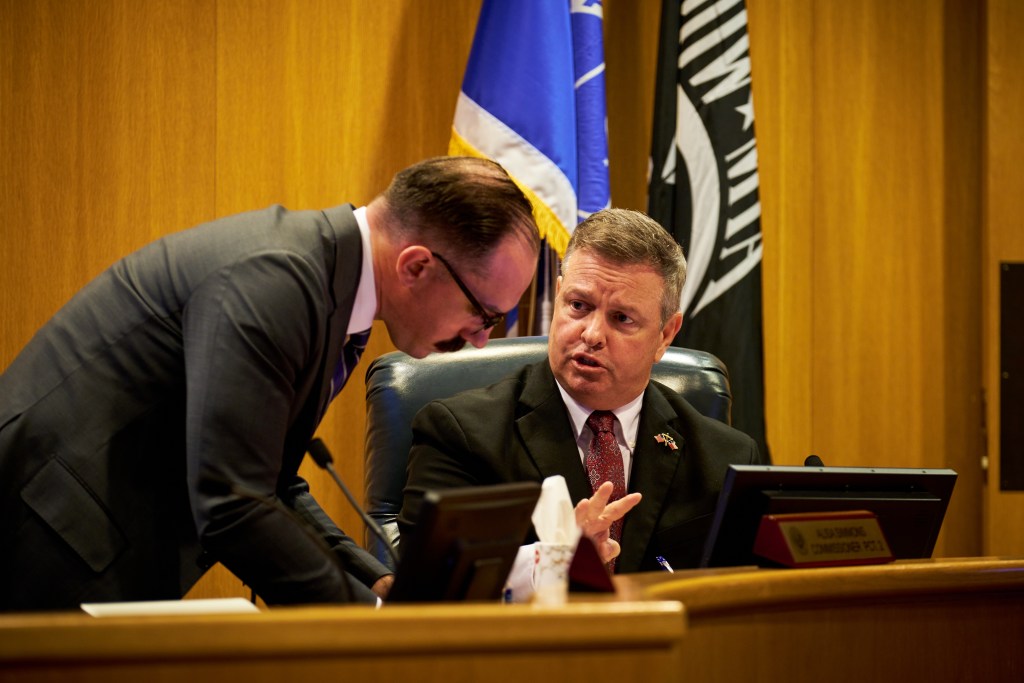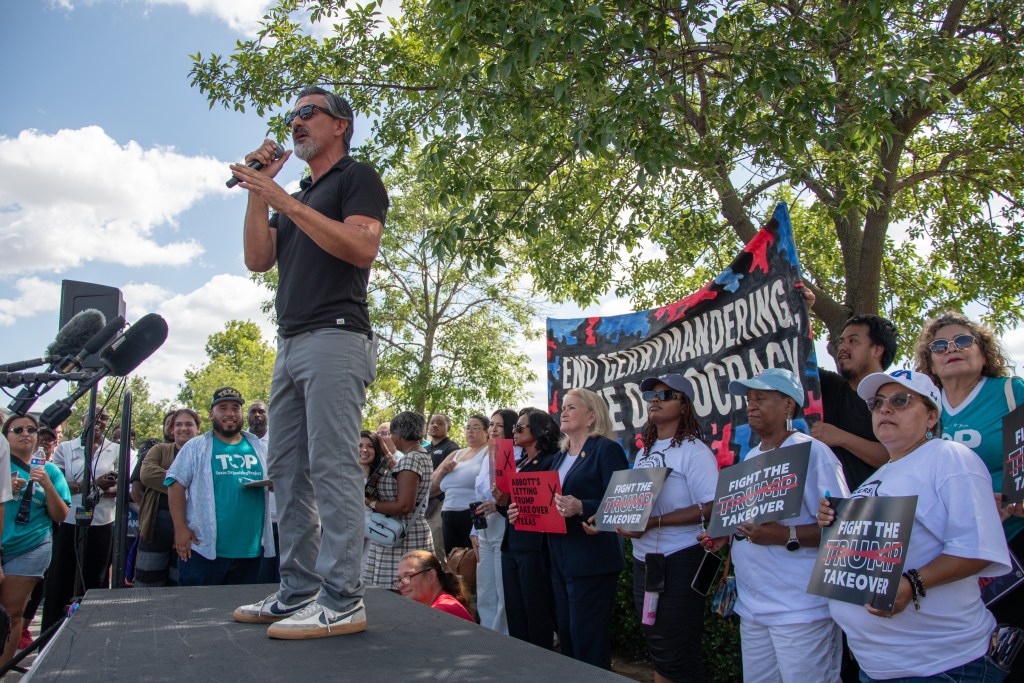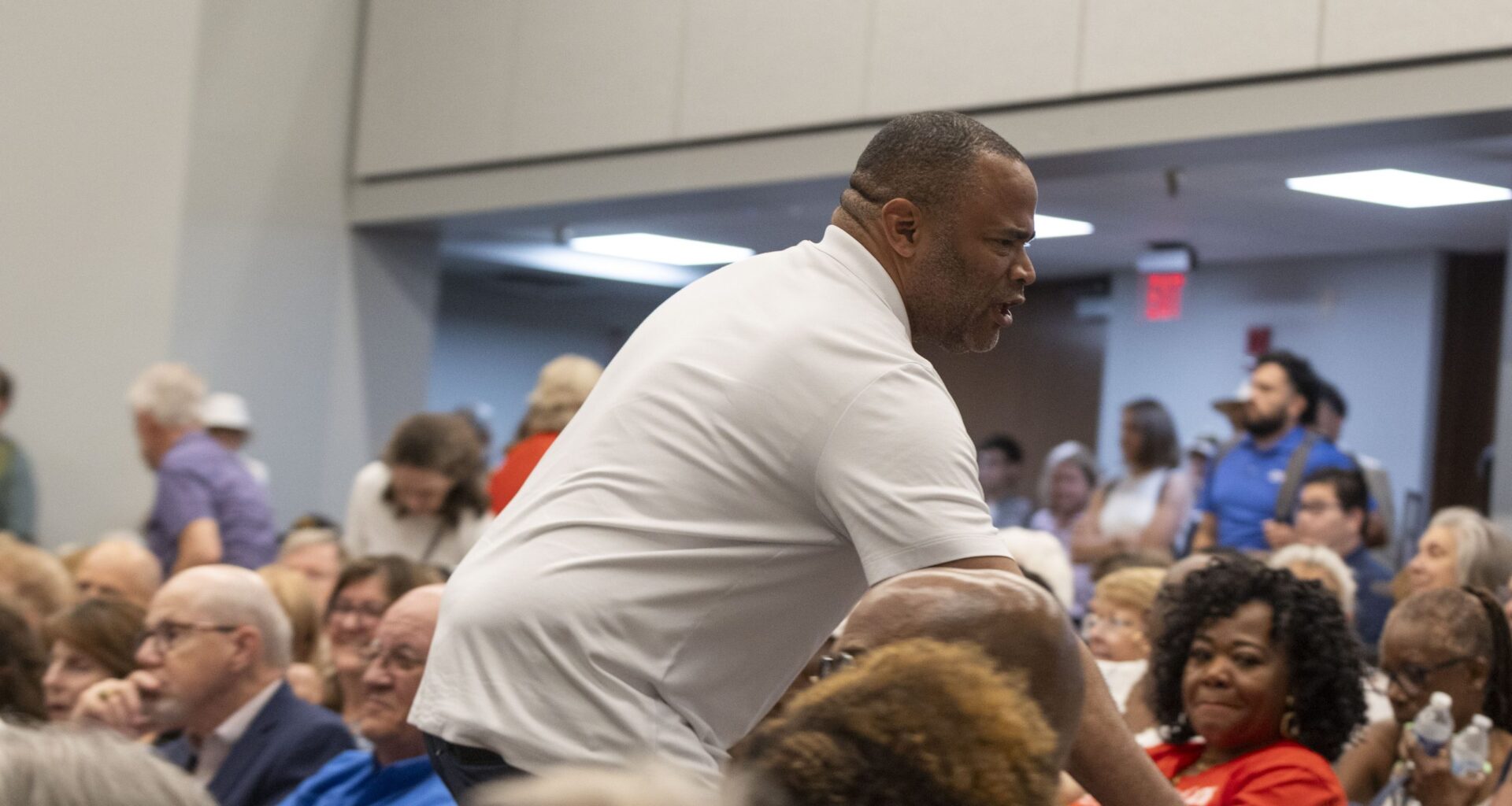AUSTIN — Just weeks after a makeover of the commissioners court, historically red Tarrant County is again the focal point of redistricting politics as proposed congressional changes move a key Democratic stronghold out of the county.
The first draft of a new congressional map released July 30 could ensure GOP representation across the county by cutting U.S. House District 33 completely out of Tarrant County, which would go from having seven representatives to five.
The map has the district — currently held by Fort Worth Democrat Marc Veasey — squarely within Dallas County while key precincts would shift into other districts that are considered safe for Republican wins.
Gov. Greg Abbott’s call to redraw Texas congressional districts during a summertime special session could bolster President Donald Trump’s Republican strength in the U.S. House in advance of the 2026 midterm elections.
District 33 is among at least four key seats in the state that could flip to favor Republicans. Trump’s Justice Department asserted that as drawn now, those districts are unconstitutional, which Democratic leaders dispute.
Veasey called the proposed map a “racist” and illegal attempt to keep Black and Latino voters from having a voice.
“Trump and the Republican cowards want to rig the system because they know they can’t win when every voice counts and every vote matters,” Veasey said in a statement. “So instead of earning our votes, they are trying to erase us.”
The latest redistricting battle comes at a time of still-evolving political trends in Tarrant County, which has an estimated 2025 population of more than 2.2 million. County seat Fort Worth became the nation’s 11th-largest city in 2024, surpassing Austin to become the fourth-largest city in Texas.
The changing demographics have meant Tarrant County, which long carried the reputation as “the largest red county in the nation,” has become more purple in recent years, said Cal Jillson, a political science professor at Southern Methodist University.
“The broad evolution, the broad change is to a more competitive balance between Democrats and Republicans in Tarrant County,” Jillson said. Since 2010, Republican-leaning white voters have dropped from a majority of the population to 42% while Blacks, Latinos and Asians, who constitute much of the Democrats’ base, have surged in growth, he added.
Redistricting of elective governmental bodies is mandated at the start of each new decade to reflect population changes over the previous 10 years and realign members’ districts accordingly. Redrawing boundaries outside of that is unusual, with such efforts often disputed in court.
Now, this round of Texas’ mid-decade redistricting is provoking perhaps an even greater outpouring of partisan vitriol than some previous efforts. Texas House Democrats vow to consider every available option — including a quorum-busting walkout — to combat Abbott and Republicans’ legislative majority.
 Attendees listen to a speaker during a redistricting hearing July 28, 2025, in the Rosebud Theater at the University of Texas at Arlington. (Mary Abby Goss | Fort Worth Report)
Attendees listen to a speaker during a redistricting hearing July 28, 2025, in the Rosebud Theater at the University of Texas at Arlington. (Mary Abby Goss | Fort Worth Report)
Hundreds attended a heated July 28 public hearing in Arlington, overwhelmingly speaking out against any changes. Other such hearings were held across Texas.
Shared just days after the hearings, the proposed map breaks up parts of District 33 into others held by Republicans — including Roger Williams’ District 25 that includes parts of Parker County and stretches west toward Eastland, and Craig Goldman’s District 12 that includes parts of Tarrant and Parker counties.
“It’s shameless that they hid the map until after the public hearing,” said Matt Angle, of Fort Worth, director of the Democrat-aligned Lone Star Project. He said the plan constitutes “an assault on Texas” by undermining the voting strength of Blacks and Hispanics.
Rep. Chris Turner, D-Grand Prairie, one of three Tarrant County members of the House committee working on redistricting, called this summer’s efforts to redraw the congressional boundaries a “charade,” asserting that the “main objective of the special session is to surrender to Donald Trump.”
Two Fort Worth Republicans on the 21-member Texas House panel, Reps. Charlie Geren and John McQueeney, said they will not comment on redistricting.
 Texas House members listen to U.S. Rep. Marc Veasey, D-Fort Worth, during a redistricting hearing July 28, 2025, in the Rosebud Theater at the University of Texas at Arlington. (Mary Abby Goss | Fort Worth Report)
Texas House members listen to U.S. Rep. Marc Veasey, D-Fort Worth, during a redistricting hearing July 28, 2025, in the Rosebud Theater at the University of Texas at Arlington. (Mary Abby Goss | Fort Worth Report)
Other area lawmakers working on the redistricting efforts include state Sen. Phil King of Weatherford, whose multicounty district includes part of Tarrant County. He is overseeing the Senate’s committee on the issue.
King said the mid-decade redistricting is “completely legal and appropriate,” particularly in light of the state’s surging population growth.
“People move in and out,” he said. “And I know my home county (Parker), two years ago, was the sixth-fastest growing county in America. So there have been changes, and it’s reasonable to look at that.”
In a move that may have heightened political sensitivities to redistricting, the Tarrant County Commissioners Court on June 3 adopted its new map that reshapes the two Democratic-controlled precincts and increases prospects for a bigger conservative majority on the county governing body.
 Tarrant County Judge Tim O’Hare talks to a staff member at a commissioners court meeting on April 2, 2025, at the Tarrant County Administration Building. (Drew Shaw | Fort Worth Report)
Tarrant County Judge Tim O’Hare talks to a staff member at a commissioners court meeting on April 2, 2025, at the Tarrant County Administration Building. (Drew Shaw | Fort Worth Report)
County Judge Tim O’Hare, who recently announced his reelection bid for the county’s chief executive, pushed enactment of the plan, telling a TV interviewer that his goal was “making sure we have a stronger Republican majority on the court.”
Representatives from O’Hare’s office did not respond to a request for comment on the legislative hearing in Arlington.
That mid-cycle reshuffling was accompanied by allegations of racism and diminished minority representation, assertions echoed in attacks on the state’s redistricting effort.
Democrat Joel Burns, a former Fort Worth City Council member who is now a member of the DFW Airport Board of Directors, said controversies such as the confrontations over the commissioners’ plan have escalated people’s awareness of redistricting.
“There’s a lot more interest being paid to it than there ever has been,” he said.
The Democrats saw momentum in Tarrant County following the 2018 election when Beto O’Rourke narrowly edged out winning incumbent Sen. Ted Cruz to secure Tarrant County voters. Then Joe Biden was the county’s choice over Trump in the 2020 presidential race. By last year’s presidential race, the county swung back, with Trump winning GOP voters.
In that 2024 election, SMU’s Jillson said Trump scored unexpectedly well among Blacks and Hispanics enroute to winning a nonconsecutive second term in the White House.
“All Republicans can really hope for is that their success in 2024 among Hispanic and Black men … continues in the future,” Jillson said, “but there’s no guarantee of that.”
Now with the 2026 midterm elections approaching, Tarrant County’s four Democrats in the Texas House, including Turner, are displaying a consolidated front to prevent the loss of U.S. Rep. Marc Veasey, D-Fort Worth, and other targeted colleagues in the redistricting efforts.
Fort Worth’s state Rep. Nicole Collier, who led a Democratic walkout against a restrictive Republican voting bill in 2021, said she is prepared to repeat the tactic again. Breaking a quorum in the Republican-led, 150-member Texas House would require the absence of at least 51 of the 62 House Democrats.
“The only way to delay them is not to have a quorum,” she said. “That’s the only way to delay the maps. You’re not going to delay them on a point of order. You’re not going to delay them on an amendment.”
 State Rep. Ramon Romero Jr., D-Fort Worth, speaks during a redistricting protest July 28, 2025, at the University of Texas at Arlington. (Isaiah Rodriguez | Fort Worth Report)
State Rep. Ramon Romero Jr., D-Fort Worth, speaks during a redistricting protest July 28, 2025, at the University of Texas at Arlington. (Isaiah Rodriguez | Fort Worth Report)
Ramon Romero Jr., of Fort Worth, who chairs the 42-member Mexican American Legislative Caucus, also condemns the redistricting intentions. However, he cautioned Democrats to hold back on a walkout while residents of Kerr County are dealing with the devastation from the July 4 floods.
“Right now, we have a governor that is going to do whatever he is sold from the administration,” Romero said, predicting that the potential impact of redistricting Latinos will stir “outrage” in Black and Hispanic communities.
He said Abbott should tailor the special session solely to dealing with the flood aftermath with the option of deferring other issues for a later session.
Rep. Salman Bhojani, a Euless Democrat who became one of the first Muslims in the Legislature with his election in 2022, said Democrats should “use all the tools available to us” to fight unfair redistricting.
Meanwhile, the two legislators overseeing redistricting — King and Republican Rep. Cody Vasut of Angleton, who chairs the House’s committee on the matter — have pledged a fair and transparent process.
“We’re going to follow the law,” Vasut said at the first of at least seven House hearings. “It is the chair’s intention at all times that we are going to follow the Voting Rights Act.”
Dave Montgomery is an Austin-based freelance reporter for the Fort Worth Report.
The Fort Worth Report’s Texas legislative coverage is supported by Kelly Hart.
At the Fort Worth Report, news decisions are made independently of our board members and financial supporters. Read more about our editorial independence policy here.
Related
Fort Worth Report is certified by the Journalism Trust Initiative for adhering to standards for ethical journalism.
Republish This Story
Republishing is free for noncommercial entities. Commercial entities are prohibited without a licensing agreement. Contact us for details.
